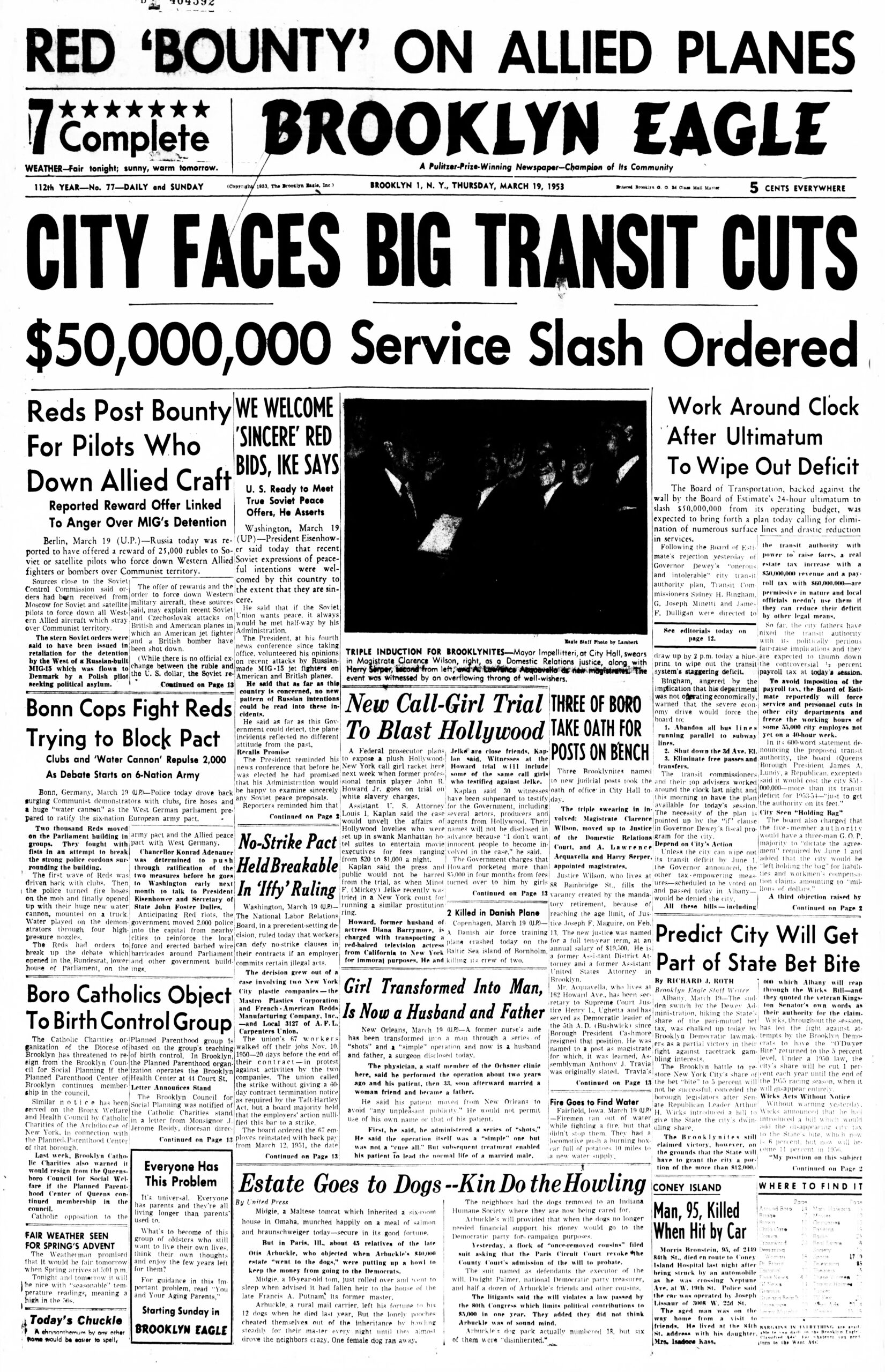March 19: ON THIS DAY IN HISTORY

ON THIS DAY IN 1867, the Brooklyn Daily Eagle reported, “The disgraceful riot between those who took part in the celebration of St. Patrick’s day in New York, and the police, sadly mars the otherwise pleasing recollection of an anniversary celebrated with great enthusiasm by the exiled children of Ireland, with the hearty approval of all classes of our population. Unfortunately, too, the fair fame of our city is more or less implicated, for the riot took place in that part of the procession in which the Eastern District societies were placed. We cannot, for the life of us, see why these societies cannot celebrate the day in Brooklyn instead of joining a procession in New York which swells into unwieldy and troublesome proportions. There is no good reason why any class should be allowed to stop the outdoor business of a great city for hours together, and if such public displays cannot be confined to the lesser thoroughfares, they had better be prohibited altogether, and if the general rule is adhered to, no one will have reason for special complaint.”
***
ON THIS DAY IN 1918, the Eagle reported, “The Daylight Saving bill was signed today by President [Woodrow] Wilson. The new law puts all clocks forward an hour at 2 p.m. on the last Sunday in March and turns them again the last Sunday in October. The daylight saving plan will go into effect and be observed without the slightest disorganization or impairment of existing conditions. Trains will run as usual, and every feature of daily life into which the element of time enters will remain unchanged. Before retiring on the last Saturday of this month, the American householder will set his clock an hour ahead, and then may go to sleep and forget entirely about daylight saving until the last Saturday in October. On that date he will reverse the process, turning back the hands of the clock an hour, and the next day the nation again will run on ‘sun’ time.”